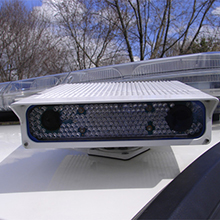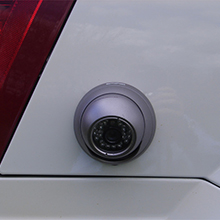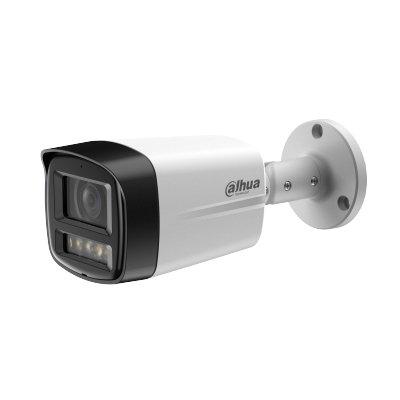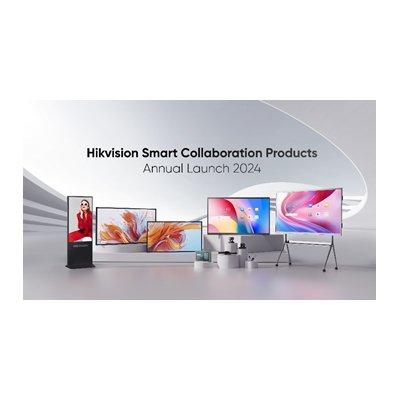 |
| The AutoVu Sharp LPR cameras are mounted on a vehicle to provide a mobile solution |
The City of Guelph, in Ontario, Canada is located 100 km west of Toronto and is home to 118,000 residents. The city has been named one of the country’s smartest communities and safest cities, and is ranked among the top ten places to live in Canada. Guelph is a single-tier municipality, meaning that the city itself is responsible for creating and enforcing all bylaws, including those pertaining to parking.
The business challenge
Based on a report from Economic Development and requests from downtown businesses, Guelph’s City Council recently enacted changes to its downtown parking restrictions, removing the requirement for payment at parking meters, and implementing in its place, a two-hour daily maximum for parking throughout the downtown area. This resulted in a need for increased staff to consistently enforce the parking restrictions. At that same time, however, a change was implemented in the governance of Guelph’s bylaw system that required the parking officers to split their time in order to enforce other bylaws as well. Doug Godfrey, Manager of Bylaw Compliance and Security for the City of Guelph, oversees these officers as well as the operations for a number of bylaws, ranging from the aforementioned parking to items like noise violations and business licensing. When the bylaw governance changed, Mr. Godfrey observed that the time split between various duties strained his officers’ abilities to adequately enforce parking regulations. Additionally, Guelph began to take on extra duties via contracts for enforcement in private parking lots, further overwhelming his officers.
Mr. Godfrey’s team was facing a varied number and type of parking enforcement requirements. The downtown area is approximately a 20-block radius, delineating around 654 on-street spaces. This zone carries a two-hour daily parking maximum, between 9am and 6pm. In select outlying or underutilised areas of the zone, permits may be available for residents during the day for parking beyond the two-hour maximum. During the winter, parking is prohibited on the majority of City streets between 2am and 6am without an exemption permit. Residents are allowed to request twelve exemption permits per year, each of which provide for two nights of parking for two vehicles. Approximately 12,000 of these exemption permits are issued per year. There is also a 48-hour maximum for consecutive hours parked on a city street, regardless of the permitting.
The team must also patrol nine municipal lots, which hold 860 parked spaces and 1000 surface lot spaces. Residents are permitted to park in these lots for free overnight, and may purchase monthly permits for daytime parking. The lots carry a mix of timed (paid) parking and permitted parking regulations, and carry 18-hour maximum time limits, which are usually extended to 48 hours out of courtesy. Approximately 1300 permits are issued for these lots annually.
The areas surrounding the downtown carry a mix of unpaid 15-minute, one-hour and two-hour time limits, with re-parking permitted. Parking permits are available in these areas for residents.
In addition, the City has recently taken on contracts for the monitoring and enforcement of parking in 16 private lots (associated with hospitals, colleges, condos, etc.), whose combined number of spaces exceed 5000. Some lots are permit-only, but must be monitored nonetheless to enforce a 48- or 72-hour maximum, after which vehicles must be re-parked. Other lots carry a mix of permit and time-limited (paid at an hourly rate) parking, and must be monitored for expired time as well assurance that permitted vehicles are parked in designated areas.
Given the staggering variety of parking options, Mr. Godfrey’s team was facing an overwhelming number of parameters. Additionally, taking into account the officer’s newfound responsibilities that would detract from time spent on parking enforcement, Mr. Godfrey set out to find a solution to assist his officers and increase patrol efficiency.
End-user needs
 |
| Additional cameras are mounted at the back of the patrol vehicle to take photographs of the vehicle’s front and rear wheels |
“Prior to my search for a new solution, two officers monitored downtown parking during the day, manually entering license plates into handheld devices which transferred records to our central database as well as to each other’s handhelds. Each officer required approximately 3.5-4 hours to complete a full circuit,” said Mr. Godfrey. “Outside of downtown, an officer would drive around to time-limited areas, park, physically chalk vehicles, record license plate information by hand in notebooks and then begin again.”
“To manage the overnight parking exemptions, a list of overnight permits would be physically printed out onto a piece of paper, and officers would patrol on foot at night to check the license plates against the exemption list. These officers would also patrol the municipal parking lots at night on foot.”
Mr. Godfrey was looking for a new system that would increase his team’s efficiency to such a great degree that coverage of the patrol areas would be increased, time would be leftover for enforcement in the new private lots, and there would still be plenty of time for his officers to handle their other bylaw duties. This was not a small order. Moreover, he needed a system that could handle a multitude of parking types, including permitted zones, timed zones, re-park zones, no re-park zones, and zones that were a mix of several types. The system also needed to be able to incorporate a large exemption database with various types of entries, including overnight exemption lists, private permitting databases, municipal permitting and more. In short, Mr. Godfrey needed a smart system that could not only collect license plate information efficiently, but could also use that data to assist his officers in cross-referencing and locating vehicles. It was at this point that he set out to find a license plate recognition (LPR) solution to meet these needs.
The perfect solution
Mr. Godfrey issued an RFP (request for proposal) to solicit possible solutions and received a number of responses. Among the proposals was one for AutoVu, the LPR system within the Security Center, Genetec’s unified security platform. Using specialised LPR cameras, AutoVu scans surrounding vehicle plates, compares them to a database of permitted vehicles or scofflaws and alerts parking enforcement staff when they need to take action.
The AutoVu Sharp LPR cameras are mounted on a vehicle to provide a mobile solution. The license plate of every vehicle is read and its position is recorded using the AutoVu Navigator, enhanced GPS technology. Additional cameras are mounted at the back of the patrol vehicle to take photographs of the vehicle’s front and rear wheels to further enhance the digital chalking solution. Genetec calls this specific technology Tire Imaging. The tire images allow patrol officers to determine whether a car has moved in situations where re-parking after the time limit is permitted. Where re-parking is not allowed, wheel images provide solid evidence that the vehicle has been parked longer than the allowable time period.
To use the system, operators need simply to select the appropriate zone within AutoVu, which includes the specific enforcement rules, and then drive through all areas of the zone. AutoVu will automatically scan and record all data pertaining to surrounding vehicles, compare that information to its database, and alert the operator if any vehicle is in infraction, requiring ticketing or other action.
“My supervisor and I had seen Genetec’s AutoVu in use in a neighbouring city, where it was used to recover stolen vehicles, and so we were already somewhat familiar with the product,” said Mr. Godfrey. “In the end, our decision hinged on the requirement for a solution that could manage both no re-park and re-park zones, and one which handled digital chalking.” Genetec’s AutoVu and the Tire Imaging feature seemed a perfect fit, and Mr. Godfrey went about deploying the product. AutoVu will automatically scan |
Training Mr. Ware’s officers took a bit of time, since they were transitioning from a technology-free solution. But they picked up AutoVu’s intuitive interface fairly quickly. “Now they won’t let you take the system away from them,” laughed Mr. Ware. “It’s great in the dead of winter – they can stay cozy inside their vehicles and still get the job done.”
The City of Guelph has two Dodge Caliber vehicles, one to use as the primary parking enforcement vehicle, and one to keep on hand as a backup. Two sets of tire imaging cameras were purchased and installed on the vehicles, as well as two Genetec Sharp LPR cameras for license plate reading, which can be easily moved to the backup vehicle when necessary. A Panasonic Toughbook computer was purchased to run the AutoVu Patroller software within the vehicle. The backend of the system functions within Genetec’s unified security platform, the Security Center. Municipal officers can access and organise AutoVu information from the platform, which is virtualised via VMware, running on HP DL380 server hardware.
The installation of the system went smoothly, and four officers were trained to use AutoVu so that they could assist the remaining officers in learning the new protocol. The system includes a wireless connection, which allows officers to simply drive the vehicle near City Hall in order to swiftly transfer data to and from the main database before driving off again on another round of patrols.
AutoVu has also been integrated with Guelph’s Nordat database, which manages their various exemptions. “A public-facing portion of this exemption database has been created, which allows residents to log in on the Web and request overnight parking exemptions,” said Mr. Godfrey. “This will enable automation of exemption entry into AutoVu. A number of the permits associated with municipal lots have also been integrated with the system and we hope to expand this to the private lots soon, creating a unified and automated permitting and exemption database to interface with AutoVu.” Mr. Godfrey is also currently in the process of tying AutoVu into the police database in order to help locate wanted or stolen vehicles and alert law enforcement to their whereabouts.
The Benefits
"AutoVu has more than met Mr. Godfrey’s need for a great increase in patrolling efficiency" |
AutoVu has more than met Mr. Godfrey’s need for a great increase in patrolling efficiency. Instead of two officers patrolling the downtown area by foot, there is now one on-foot officer who manages only specific, anomalous pockets such as no-parking areas. A second officer patrols the larger downtown areas in the AutoVu-enabled vehicle, and is able to make his rounds quickly and then move on to the outlying areas. The third officer who was previously in charge of physically chalking wheels has been able to reassign all of his time to other bylaw enforcement. Overnight patrols have also been made drastically more efficient by enabling a simple drive through the zone as opposed to painstaking patrols on foot with paper lists of license exemptions.
“The jump in efficiency has enabled consistent patrols within downtown,” said Mr. Godfrey. “Prior to implementation, there had been public concerns about the ability to consistently patrol timed parking, but since the use of AutoVu began, only a limited number of complaints have been received.” There had also been much support for AutoVu from the some of the shops within the downtown area, based on the idea that the increased vehicle turnover could help stimulate business. The consistent enforcement is also of great benefit during construction periods when parking is at an even higher premium.
In addition to increased efficiency in the parking arena, the availability of Mr. Godfrey’s team to address other needs has increased as well. For example, plans to patrol the city parks by bicycle had languished before AutoVu. Now they are able to spend much more time conducting these patrols. Response time to bylaw issues such as noise infractions has also decreased, resulting in a correlating decrease in the number of calls regarding shared rental housing issues.
The undisputable photographic infraction evidence provided by the AutoVu system and its tire imaging technology has also resulted in a lower number of trials for parking tickets. Mr. Godfrey can quickly identify useful information and court time has decreased. Additionally, since AutoVu implementation, fewer people fight tickets in the first place.
“The system works very well. The staff have enjoyed it – it is easy to use. It allows them to see when an area expires and plan their day accordingly to maximise efficiency. We have been extremely satisfied,” said Mr. Godfrey.


















